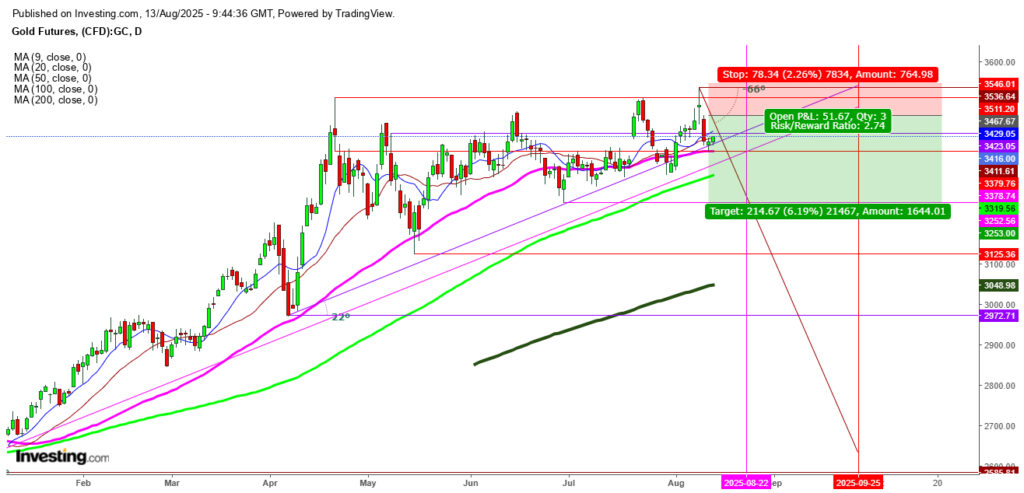The Fascinating Dynamics of Gold Futures Amidst Geopolitical Tensions
In the fascinating world of financial markets, gold has always been a symbol of wealth and a haven in times of economic uncertainty. Recently, the movements of gold futures have caught the attention of market analysts and investors alike, particularly in light of recent geopolitical events. Let’s delve into this scenario, understanding not only the recent trends but also the backstory that shapes our current situation.
Last Friday, gold futures reached a new peak at $3536, marking a significant moment for traders and investors who monitor these commodities closely. Following this high, a sharp decline was observed, leading gold to test a critical support level. By Tuesday, prices had dipped to around $3378, aligning with the 50-day moving average (DMA), a key indicator for traders. However, the market showed resilience. Prices bounced back, testing immediate resistance at the 20 DMA, around $3411. This uptick coincided with a noteworthy development: U.S. President Donald Trump signed an executive order, effectively pausing the imposition of substantial tariffs on Chinese imports for an additional 90 days.
Investors had been on edge, especially following disappointing jobs data released on August 1st. This report raised concerns about stagflation, a situation characterized by stagnant economic growth coupled with inflation. These fears were somewhat alleviated as the much-anticipated inflation data suggested that the effects of President Trump’s tariff policies had not yet significantly impacted consumer prices.
Gold futures, at this juncture, seemed indecisive. Trading within a narrow range of $3378 to $3428, the market appeared to be at a crossroads, waiting for a clear signal to either break down below support levels or break out above resistance levels.
Let’s explore the potential scenarios further. Should gold futures break below the immediate support at the 50 DMA of $3378, we might see prices slide down to $3319, where the 100 DMA could offer a new level of support. Conversely, a breakout above the 20 DMA at $3428 could embolden bulls to push for higher resistance levels, possibly testing the $3467 mark. Beyond this, it’s anticipated that significant selling pressure might emerge, setting $3546 as a critical stop-loss point for those aiming for a target of $3250.
The oscillating nature of gold futures is expected to persist, especially as the negotiation of a trade deal between the U.S. and China unfolds over the next 90 days. This period is crucial; a successful conclusion to the trade discussions could dramatically alter market dynamics, potentially providing a strong foundation for bears to dominate the trading landscape.
As we watch these developments, it’s essential to recognize the intricate balance between geopolitical events and market reactions. The recent patterns in gold futures underscore how external factors like international trade policies can significantly influence commodity prices. Traders, therefore, must stay informed and agile, ready to adjust their strategies in response to the evolving economic landscape.
In conclusion, the journey of gold futures in the current geopolitical context is a testament to the complex interplay between economics and politics. As investors navigate this uncertain terrain, it becomes abundantly clear that thorough analysis and a keen awareness of global developments are indispensable tools for understanding and predicting market movements.
Please note, this analysis is based on current observations and is intended for informational purposes only. Investors are urged to conduct their own research and exercise caution when making any investment decisions in the gold futures market.
In summary, the fluctuating fortunes of gold futures offer a compelling narrative about the impact of geopolitical tensions on financial markets. As we continue monitoring these developments, the unfolding story will no doubt provide valuable insights into the broader dynamics of global finance.


